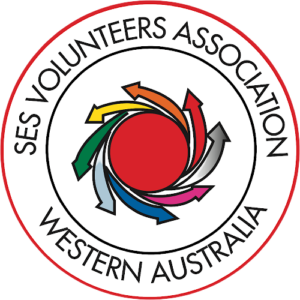The SES is the lead combat unit for Flood, Cyclone, Storm and Tsunami mitigation. This means the SES controls the situation whenever these situations occur.
It also has the flexibility to support many other emergency organisations, i.e. Search and Rescue for the police, Casualty Handling for St. John Ambulance, Logistic and Radio Communications support for Fire Services.
Orange is the international colour for rescue services.
It is easy to recognise in most emergencies, i.e. in building collapse, in bushland, in forest and in the desert.
The SES trains to perform many different duties, involving many skills.
There may be times when dangerous situations are involved however through thorough training, using the right equipment, and the right processes the danger is eliminated.
All members are insured whilst performing their duties and training.
Ask your local SES Manager about the details.
If you have a genuine income at the time of any injury incurred during an SES activity your income up to a certain limit is protected and all medical bills are covered
In many country towns SES units and Fire Brigades have agreed to join to provide a joint service through a Volunteer Fire and Emergency Service unit. These units train in both the SES and Fire Services disciplines and performs both duties. Joining a Volunteer Fire and Emergency Service unit enables you to train in all SES disciplines.
Joining the SES costs you only your time.
Life membership, should you choose to stay that long, costs nothing!
Anyone over the age of 16 can join the SES.
No, the SES is an equal opportunity service and apart from a medical declaration form and a Police integrity check, there are no pre-requisites.
The skills learnt will depend on the responsibilities of your SES local unit. Each unit trains in most of the skills below.
- First aid
- Map reading and navigation
- Land search techniques
- Urban search and rescue
- Storm damage techniques
- Flood boat rescue
- General rescue
- Erecting tents
- Radio communications
- Leadership
- Team Management
- Management
- Driving vehicles for emergencies
- 4 Wheel Driving
- Road accident rescue (country areas only)
- Single rope techniques (abseiling) and vertical rescue
- Observation from aircraft and supply dropping
- Ground support for fire services
- Catering
After a trial period (this may vary slightly from unit to unit but at around 6 weeks ) all uniform equipment and personal safety equipment (gloves, helmet, safety glasses etc.) are provided to each member.
In the metro area most units meet and train weekly and in the country this could be every two weeks or monthly.
Providing the disability is not going to be a danger to yourself or other members all you need to do is declare the disability to the Local SES manager who will discuss the ramifications if any with you.
The SES is part of DFES which is a Registered Accredited Training Organisation DFES provides Training to Nationally Accredited Standards free to all it’s registered members including the SES. There are no fees.
All Orange SES people seen on TV are volunteers they do not get paid. No SES volunteer is paid. The quality of the training and the volunteer’s dedication produces such excellent results
No, each individual makes their own arrangements with their employer. The SES will provide letters of attendance to employers for any member who volunteers at an incident.
When on active duty all food, accommodation and travel costs are met by the SES even if you are flown to Broome or Christmas Island to perform that duty.



